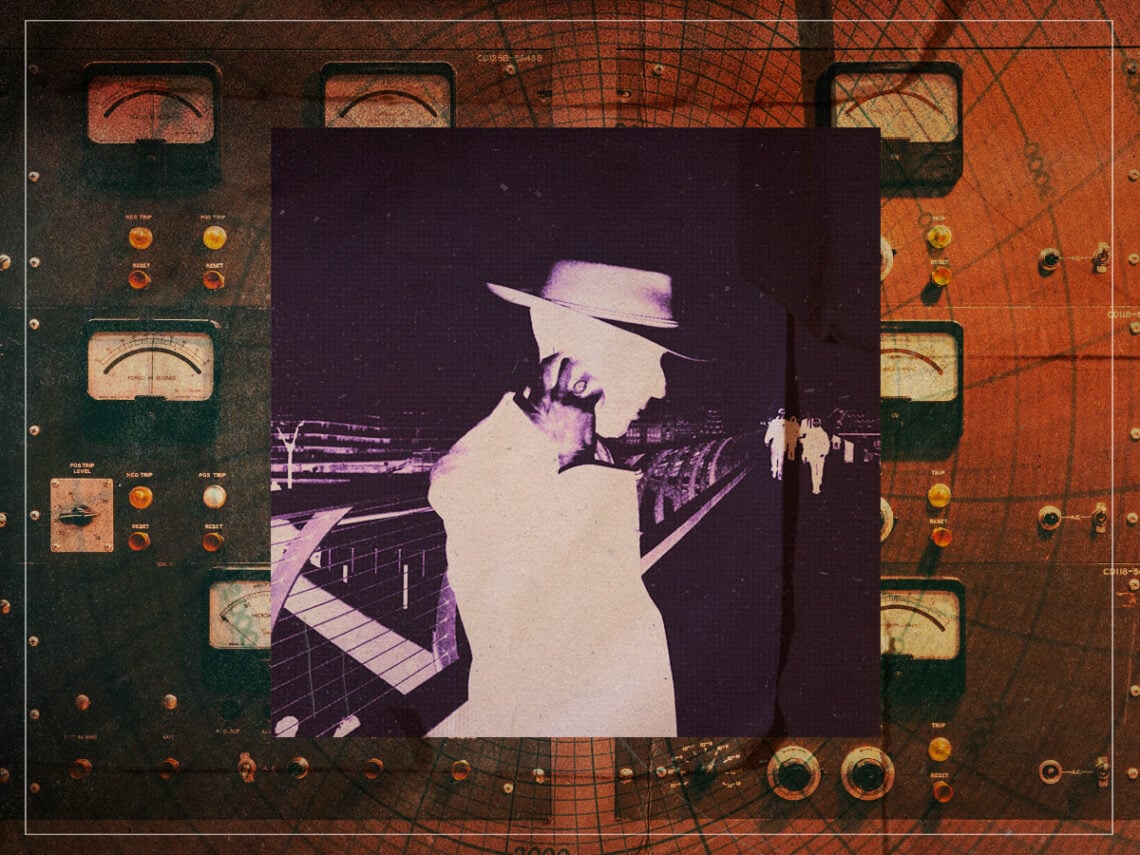Our Terms & Conditions | Our Privacy Policy
What exactly is coldwave music?

(Credits: Far Out / Oppenheimer Analysis / Dan Meyers)
Sun 5 January 2025 12:30, UK
In the wake of punk’s cataclysmic aftermath, the DIY doors that were smashed wide open found their way into electronic music. Coupled with the affordability of portable Minimoogs or Korg MS-20s, widening the accessibility of synthesisers away from the prog wizards who had come to define the new instrument by the mid-1970s, a generation of post-punks sought to push the new wave fallout into farther sonic terrain of terse minimalism, dispassionate vocals, and icy, lyrical depth-charges between romanticism and alienation.
Coined by Sounds magazine in a 1977 feature on Kraftwerk’s Trans-Europe Express titled ‘New musick: the cold wave’, the Düsseldorf electronic pioneers forged coldwave’s sonic foundations, Radio-Activity‘s title track from two years prior pointing the way with its frigid melodies and brittle percussion. Martin Hannet’s distinctive austere production of Joy Division’s Unknown Pleasures set a template for the burgeoning coldwave movement, and The Cure’s ‘A Forest’ proved spartan, introspective mood cuts could be a hit.
Primarily a European movement, clusters of groups across both sides of the Curtain began experimenting with keyboards, drum machines, and tape effects in the early 1980s. Groups like Nine Circles, Oppenheimer Analysis, Gestalt, and early Martin Dupont all disparately yet symbiotically crafted chilly cuts of glacial bedroom pop that never touched the commercial heights of the UK’s synthpop explosion reached by Yazoo or The Human League.
Languishing in obscurity for decades, the original coldwave progenitors largely existed as footnotes on music blogs, underground cassette communication, or vinyl rip uploads on YouTube by the scene’s small but dedicated fanbase. Recognition finally arrived in the mid-2000s with DJ Pieter Schoolwerth’s Wierd label and Brooklyn nights, playing the coldwave he’d loved from his youth and fomenting the resurgence of a new crop of frosty synthesists, including Xeno & Oaklander, Led Er Est, and Opus Finis.
Where did the coldwave rebirth come from?
Committed to excavating as much of the lost coldwave as possible, former East Village Radio host Veronica Vasicka launched Minimal Wave, a label and reissue project bringing the genre’s lost gems to new light, which almost has become an umbrella by-word for high-quality acts that orbits the coldwave and minimal-synth worlds. It was a genre that saw a fresh rebirth thanks to its tie-in to the brutalism of these times.
Praised for its human imperfections and tonal blemishes, coldwave offers a slice of electronic and post-punk music that creatively worked with their lo-fi peripheries and constrained budgets to carve work that was pure and untouched by commercial influence.
Speaking to The Quietus in 2010, Schoolwerth dispelled the wave’s often shallow connotations: “The word ‘cold’ is quite complex in describing this music, for apart from the sounds, as an adjective it, more importantly, has always suggested to me more the artist’s fragile emotional states while producing it, and the accordant fact that it sounds so direct and unmediated in production, it’s very private and humanly ‘warm’ through its metallic, icy sounds.”
Concluding, “In other words, ‘Cold’ to me has always suggested more something akin to sensitised and vulnerable – as in being strip searched and laid bare on the ice, not what one would on first glance at the word assume to sound guarded or detached.” You can see from that invocation why it feels like an apt soundtrack to these abstract days.
Related Topics
Subscribe To The Far Out Newsletter
[ad_1]
Images are for reference only.Images and contents gathered automatic from google or 3rd party sources.All rights on the images and contents are with their legal original owners.
[ad_2]



Comments are closed.